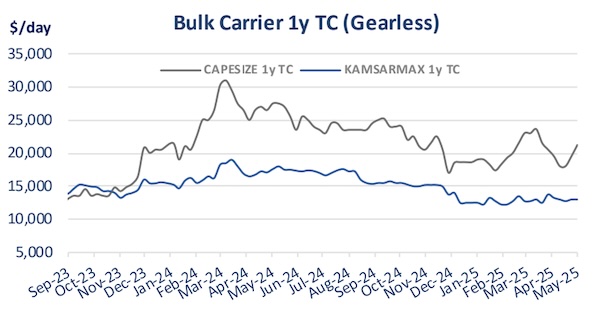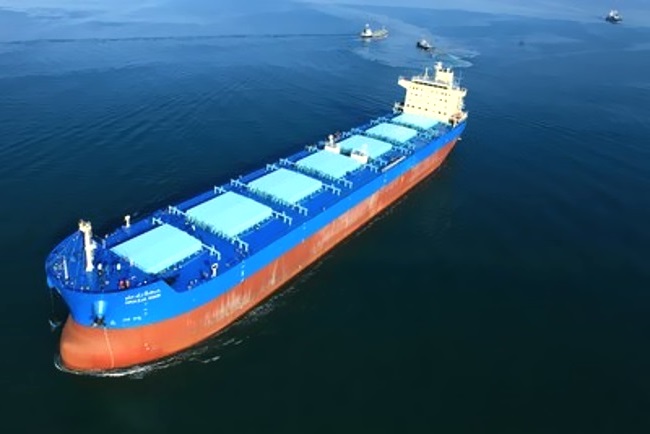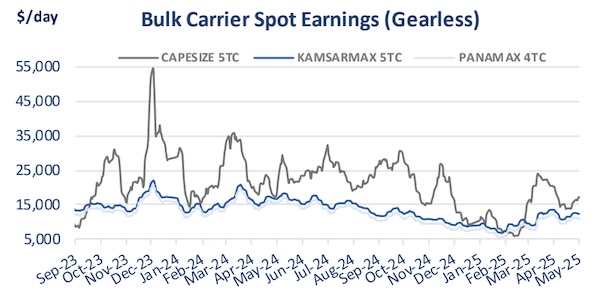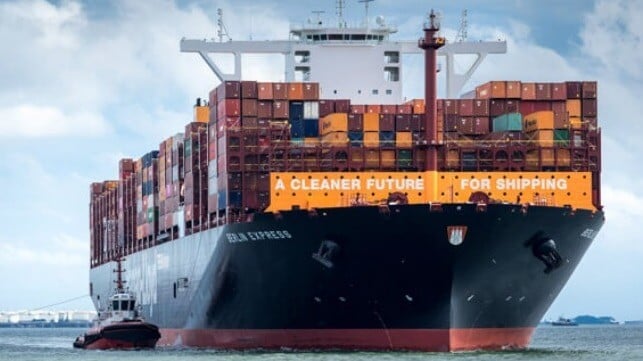Ageing Global Fleet a Challenge Throughout the Shipping Industry

The challenge of an ageing tonnage across most ship classes, together with an increase in newbuildings, will create a new landscape when it comes to the characteristics of the global shipping fleet. In its latest weekly report, shipbroker Xclusiv said that “as of April 2025, the global merchant fleet is navigating a pivotal crossroad. Across bulkers, tankers, containers, LNG and LPG carriers, operators face the twin challenges of ageing tonnage and a surge of newbuilds set to reshape market capacity. Here’s a closer look at each segment and what lies ahead”.
According to the shibproker, “bulkers continue to dominate sheer numbers, with over 14,300 vessels trading internationally. A strong renewal trend is evident: roughly 71 % of the fleet is 15 years old or younger, while the remaining 29 % hails from an older generation. In DWT terms, today’s 1,046 million ton fleet will grow by about 107 million tons as 1,335 new ships come online. Deliveries are spread evenly—387 arrivals in 2025, 529 in 2026 and 419 from 2027 onwards—suggesting owners are replacing ageing units at a measured pace rather than chasing a capacity binge”.

Source: Xclusiv
“The tanker community, numbering just under 7,800 ships, is almost evenly split between younger and senior tonnage: 53 % of vessels are under 16 years, with 47 % older. Meanwhile, close to 1,200 newbuilds—15 % of the active fleet—are on order, representing an additional 102 million DWT against today’s 699 million DWT. With 269 deliveries slated for this year and nearly 1,200 more by 2027+, the balance between phasing out obsolete units and absorbing extra capacity will shape freight rates through the next decade”, Xclusiv said.
It added that “container lines have proven their appetite for green, fuel-efficient tonnage. Of the 6,877 boxships in service, 47 % exceed 15 years of age—signaling a need for replacement. The orderbook reflects that imperative: 837 new vessels, equal to 12 % of today’s count but nearly 29 % of fleet capacity, underscore a strategic pivot toward larger, eco-friendly designs. Deliveries are staggered—183 ships in 2025, 181 in 2026 and a hefty 473 thereafter—preparing carriers to meet tightening emissions rules and evolving trade patterns”.

Meanwhile, “specialized LNG tonnage remains one of the youngest segments, with 69 % of its 824 vessel fleet under 16 years old. Yet the orderbook tells an even more bullish story: 343 carriers on order account for 42 % of the existing fleet, equivalent to a 46 % jump in capacity once these ships arrive. With 81 deliveries this year, 94 in 2026 and 168 from 2027 on, the LNG fleet is gearing up for a major expansion—mirroring the global rush to diversify energy sources and bolster supply chains. LPG shipping is following a similar trajectory. Of the 1,690 LPG carriers sailing today, 54 % remain under 16 years old, while 46 % have passed that milestone. The orderbook counts 310 vessels—a nearly 41 % capacity increase in the months ahead. Owners can look forward to 50 new ships in 2025, 94 in 2026 and 166 thereafter, reflecting growing demand for liquefied gases in both energy and chemical markets”.

Source: Xclusiv
“The clearest takeaway is that fleet renewal is well underway but uneven across segments. Bulk carriers are cautiously replacing older vessels, tankers are on the cusp of a capacity surge, and containers are racing to modernize. Meanwhile, LNG and LPG carriers stand out for their aggressive expansion, poised to reshape ton-mile balances as energy dynamics evolve. Looking forward, the timing of deliveries—front loaded in some sectors, back loaded in others—will be critical. Market equilibrium will hinge on matching supply growth with demand: too many ships too soon could exert downward pressure on earnings, while phased deliveries allow owners to retire inefficient tonnage and adapt to regulatory shifts. As we move through 2025, operators, financiers and charterers alike will be watching orderbook cancellations, scrapping rates and freight rate trends to gauge whether this wave of newbuilds brings a smooth renewal or a capacity glut”, Xclusiv concluded.
Nikos Roussanoglou, Hellenic Shipping News Worldwide




